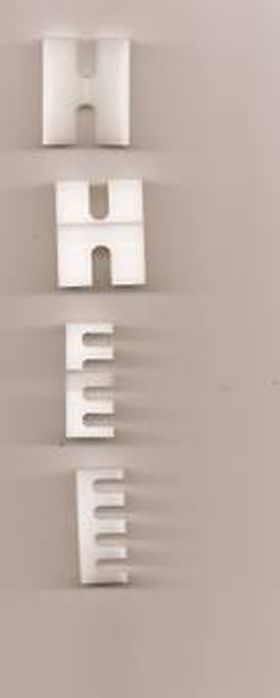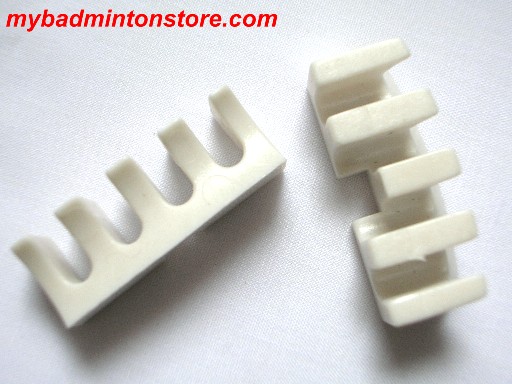Lakers4Life
Hall of Fame
A friend of mine strings his daughters rackets about once a month each on his Gamma 5003. She is USTA Junior player and breaks string frequently. The racket she uses are Babolat AeroDrivePro GT. The inside of the frame is cracking at the 12 and 6 o'clock points where the billards touch. Since the billards on the Gamma 5003 are straight and the frame of the ADP GT are curved, there is a lot of pressure at the contact points.
As Far as I know, the cracking on the paint, or else they would have "Taco'd" a long time ago. I'm just wondering if anyone with an Gamma 6-point has had the same problem, or anyone with a 6 point mount with straight billards, that matter.
I'm recommending shaping the billards to apply more contact area to the frame or use some type of padding like leather. The billards on my Babolat Sensor are curved, so I don't experience the same problem. Also the plastic pads seem to be made of a softer material than the Gamma pads. They tend to deform over time.
As Far as I know, the cracking on the paint, or else they would have "Taco'd" a long time ago. I'm just wondering if anyone with an Gamma 6-point has had the same problem, or anyone with a 6 point mount with straight billards, that matter.
I'm recommending shaping the billards to apply more contact area to the frame or use some type of padding like leather. The billards on my Babolat Sensor are curved, so I don't experience the same problem. Also the plastic pads seem to be made of a softer material than the Gamma pads. They tend to deform over time.










